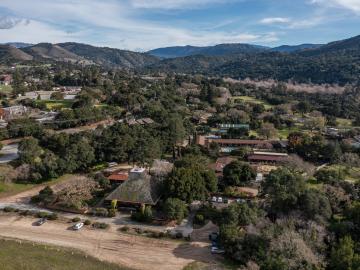Biology Major Volunteers at Public Health Organization
February 19, 2013
Madeleine O'Meara
At Oberlin, the period between fall and spring semester known as winter term is an opportunity for growth, reflection, and new experiences. Throughout the month, formal classes are suspended, and students have the option of completing a project of their choice for half or full credit. Regardless of the project, the central objective of winter term is to continue the process of personal and academic discovery outside the confines of a classroom.
Two months ago, book titles like A History of the Breast or The Immunobiology of Human Milk may have made me slightly squeamish or elicited an uncomfortable giggle. However, after my winter term internship working at the Mother’s Milk Bank of Denver (MMBD) and handling thousands of ounces of breast milk on a daily basis, these titles have no effect on me. Embarrassment is a thing of the past.
While skimming through ObieOpps, an online Career Services forum for jobs and internships, last semester, I came across a posting for the MMBD. Founded in 1984, the non-profit organization “screens, collects, processes and dispenses donated human milk as a community service, providing human milk to babies whose own mothers cannot supply the milk to meet their baby’s needs,” says its website. The internship was posted by Candace Ellman ’89, the MMBD’s production manager.
I have always been interested in public health, which is partly why I decided to pursue a major in biology at Oberlin. I was intrigued by MMBD and did a little online research about the organization; with only eleven milk banks in North America, I realized this would be a unique foray into the world of innovative healthcare and non-profits. I applied, was selected, and booked my flight to Denver. I didn’t know quite what to expect, but I was grateful that there would be an Oberlin alum there to guide me.
Before working at MMBD, I thought I had a moderate understanding of childbirth and breastfeeding. On my first day of work, however, I soon realized that I was wholly uninformed. I was shocked when I opened a package, unprepared for the dozens of Ziploc bags of frozen breast milk that slid across the table. Conveniently for me, everyone at MMBD was well equipped and willing to answer the dozens of questions I asked every day, from the steps that lead to human milk production to the fundamental goals of MMBD.
“We’re really here to serve babies that are hospitalized,” says Ellman. “When a baby is first born, especially prematurely, they’re at high risk for all sorts of infections and complications. Giving them formula can affect them negatively. When babies are born prematurely often the mom can’t express milk because the factors that led to a premature birth are often similar factors that cause the mom’s milk supply not to come in.”
These situations have led to a need for donor breast milk, which is where MMBD comes in. Once a woman donates her breast milk, its path to a neonatal intensive care unit (NICU) is complicated and nuanced, riddled with rounds of testing and negotiating before it reaches its ultimate destination. On a typical day, I was involved in almost every step of this process, starting with cataloguing incoming milk every morning. I sat in on donor screenings, which ensure that the milk they donate is safe for babies to consume. Once a donor was approved, I observed the pasteurization process. When the milk was frozen and re-packaged into 4-ounce jars, I made sure it was sent to its appropriate destination.
In total, the MMBD pasteurizes about 2,200 ounces of milk every day, five days a week, a number that has increased since the organization moved from a smaller locale to its current location six months ago. Even though its output volume has increased in the last few months, one of MMBD’s goals is to attract more donors by increasing its visibility, says Ellman. “There are still a lot of people who are not aware of what we do.”
I used to be one of those people. But over the past few months, instead of trying to figure out a post-graduation employment options, I have been focusing on identifying types of jobs that I don’t want to do or industries I don’t want to be a part of. Fortunately, interning for MMBD, a nonprofit in the public health sector, did not make it onto that list. The healthcare industry isn’t normally associated with creativity, but after interning at the MMBD, I know that creative thinking is instrumental to coming up with the innovative solutions that are needed to tackle stigmatized healthcare areas.
Tags:
You may also like…
Making a Difference with Business
December 10, 2024
Omukoko Okoth ’25 chose Oberlin College for its values and opportunities, and in order to take advantage of all that Oberlin has to offer, he decided to participate in the business integrative concentration.
Oberlin Musicians Collaborate at California’s Hidden Valley Institute
February 1, 2024
Winter Term projects culminate in performances involving TIMARA, dance, chamber music, and jazz.
Oberlin Researchers Part of Breakthrough Study on Gravitational Waves
June 29, 2023
Fifteen-year NSF-funded project involves dozens of students past and present, provides evidence of Einstein’s theory of relativity.


